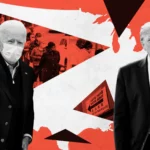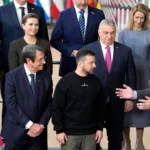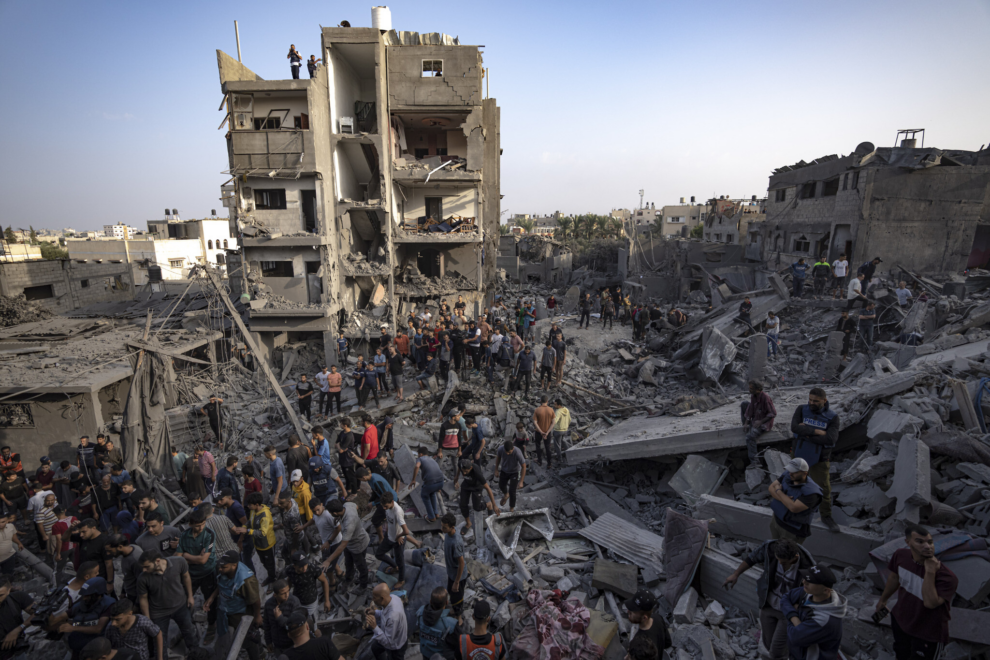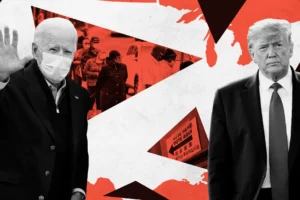In order to complete the destruction of the Hamas organization’s military and governmental capabilities in Gaza, Israel will have to conduct a ground offensive in southern Gaza. One of its main challenges in doing this is that as a result of the evacuation of the north, the population of southern Gaza is now twice its normal size.
Israel will have to reduce the number of Gazan civilians in the south both before and concurrently with the commencement of military operations in the area for several reasons.
The first is the operational fact that Hamas’s last defense is to fight under the cover of the Gazan population. In the northern stage of the operation, the IDF demonstrated that it can defeat Hamas in any ground encounter; eliminate tunnels and turn them into deadly traps (a time-consuming process); and disrupt Hamas’s reliance on operations from sensitive sites, particularly hospitals.
Hamas believes that when fighting begins in the south, it will be able to continue its longstanding tradition of engaging in warfare in an area containing many civilians, effectively using its own population as human shields. A widespread evacuation of the population from the settled areas in the south will leave Hamas without this defense.
The second central reason is Israel’s commitment to the laws of war. The IDF is committed to proportionality in the use of force. Despite the propaganda campaign by anti-Israel elements worldwide, the northern part of the operation provided a model for combating guerrilla warfare and terrorism in densely populated urban areas. This is especially evident when comparing the scope of casualties to previous operations in urban areas in the Middle East.
Consider, for example, the number of casualties in Mosul liberation in Iraq and Al-Raqqa in Syria in 2016-17, both of which were conducted by a coalition with American support. Following the battle for Al-Raqqa, internal American learning process was conducted regarding the extent of the air campaign carried out. The takeover of Aleppo in 2016 by rebels, backed by the Syrian government coalition with Russian assistance, involved Russian carpet-bombing during the battle, which destroyed large parts of the city without regard for the civilians within.
It will be a grave mistake if international criticism affect the IDF’s operational methods, particularly in the south. The IDF must continue to fight in a manner that insists on proportionality in warfare and maintains a reasonable ratio of civilian casualties resulting from the enemy’s use of them as human shields.
The third reason is Israel’s commitment to the coalition with the Americans. As I have mentioned elsewhere, as part of the “moral clarity” underlying the Biden administration’s support for Israel’s operation to destroy Hamas, there is an expectation that Israel will operate proportionally based on shared values and minimize civilian harm as much as possible. This is an American request, coupled with the provision of humanitarian aid, and Israel must adhere to it.
The residents of southern Gaza can, in principle, go to three areas:
- They can be transferred through the IDF-controlled clearing area and, under IDF supervision, return to the northern part of the Strip. This would require that the occupation and initial clearing stage in the north be completed. As this has not yet occurred, this is not yet an available option.
- They can be placed in designated protected areas in southern Gaza where the IDF will not operate unless fired upon. This is the most available and reasonable option, but the drawback is that Hamas would likely exploit it to protect its fighters.
- They can be temporarily transferred to Sinai. This is not an option as Egypt strongly opposes the idea, and their wishes should be respected. Egypt and Israel have been in a state of peace for over 40 years, and in recent years the two states have enjoyed respectful and cooperative relations. These relations should not be jeopardized for temporary operational needs.
There is another option that should be considered: a plan led by the Americans, with international and regional participation, to establish temporary accommodation camps for the residents of Gaza in the Negev. In this framework, the US military and civilian agencies, with the assistance of a coalition of Western and regional countries, would set up and operate accommodation in the Negev close to Gaza (in the Shivta – Ktzi’ot region?). These camps would serve as temporary housing for the residents of Gaza for several months until the completion of the Israeli military operation.
These are ways this idea could be implemented:
- Infrastructure for receiving evacuees would be established “on the move” and would initially rely on Israeli facilities in the area. This would be a comprehensive operation but one an international coalition can support.
- Economic incentives and other inducements would be offered to the residents of Gaza to temporarily leave the Strip.
- American soldiers and others, with the assistance of international organizations, would receive Gaza residents at crossings and conduct security insection, identity verification and documentation.
- Residents would be transported in secure convoys to large accommodation facilities established and secured with the support and funding of Western and Arab countries, led by the United States.
- Israel would have security control over the process, allowing for the identification of Hamas operatives to keep them away from the civilian population.
- The ‘Coalition for the Day After’ would, together with those residing in the camps, design the process of their return to Gaza. Key local players would be identified and a framework for a local civilian governance system for the day after would be established.
- The operation would be limited in time, and the residents would return to their regular residences in Gaza with a clear plan and private economic assistance for their rehabilitation. Conditions would include the completion of the military operation in northern Gaza and approval to begin returning civilians to the north.
In order to create symmetry in international relations towards civilians in war zones, an international plan would also be developed alongside this process to assist the rehabilitation authorities in rebuilding the Israeli communities in the Gaza envelope and returning their residents
While there are challenges to this idea, including the security aspect of having hundreds of thousands of Gaza residents in Israeli territory on top of the complexities of establishing and coordinating such an initiative, it does have several distinct advantages:
- It would be a groundbreaking solution that shows humanity towards civilians in an urban warfare zone – civilians who have been used as human shields by terrorist organizations. Israel, the party that was originally invaded and aggressed against, would temporarily relinquish control over certain areas of its sovereign territory on behalf of these civilians.
- As this is a large-scale operation, it would build the capabilities of the international coalition that will ultimately rehabilitate Gaza when the war ends.
- Israel would be deeply connected to this coalition.
- It would separate the population of Gaza from the Hamas elements and establish conditions for a civilian mechanism detached from Hamas on the day after.
Source: Besa
















